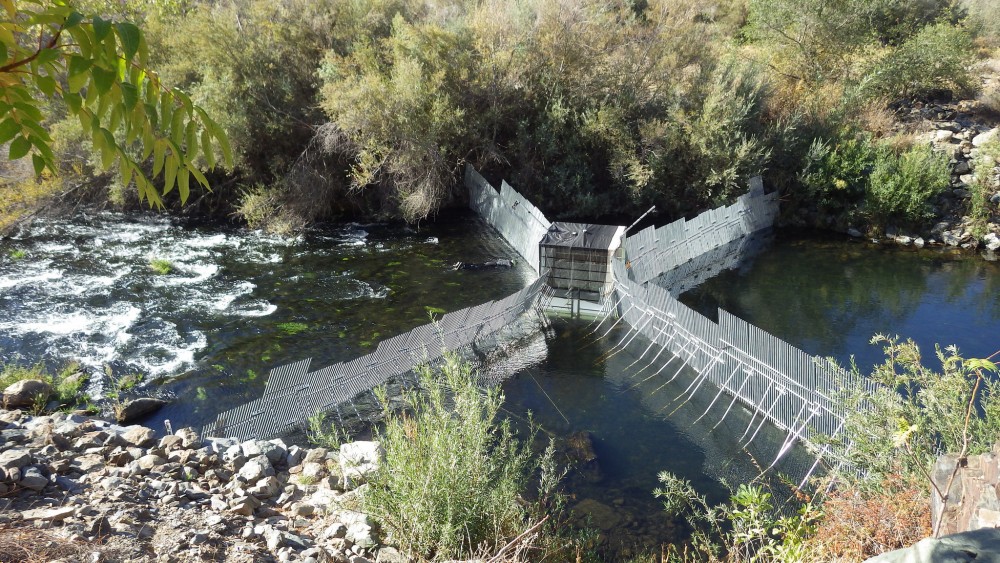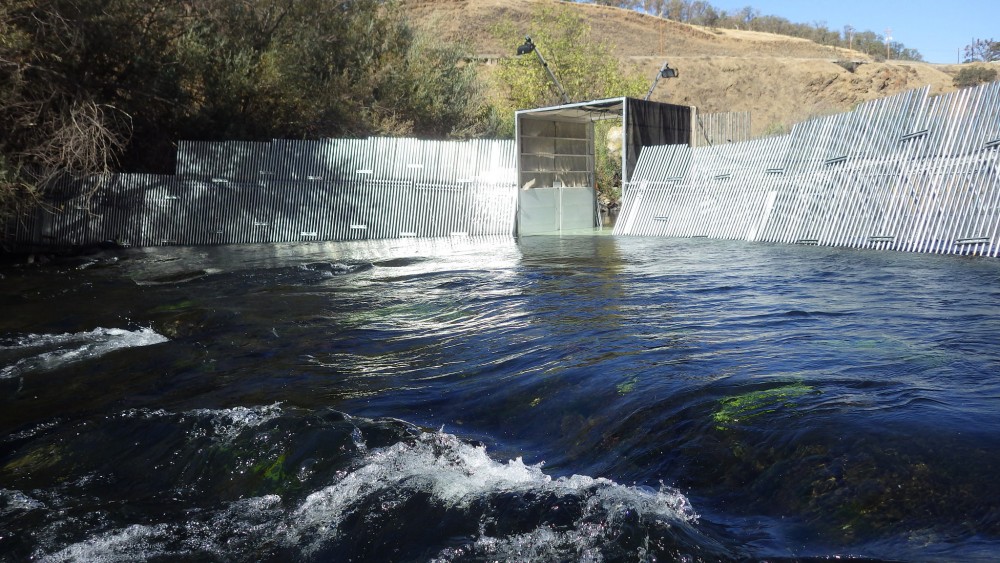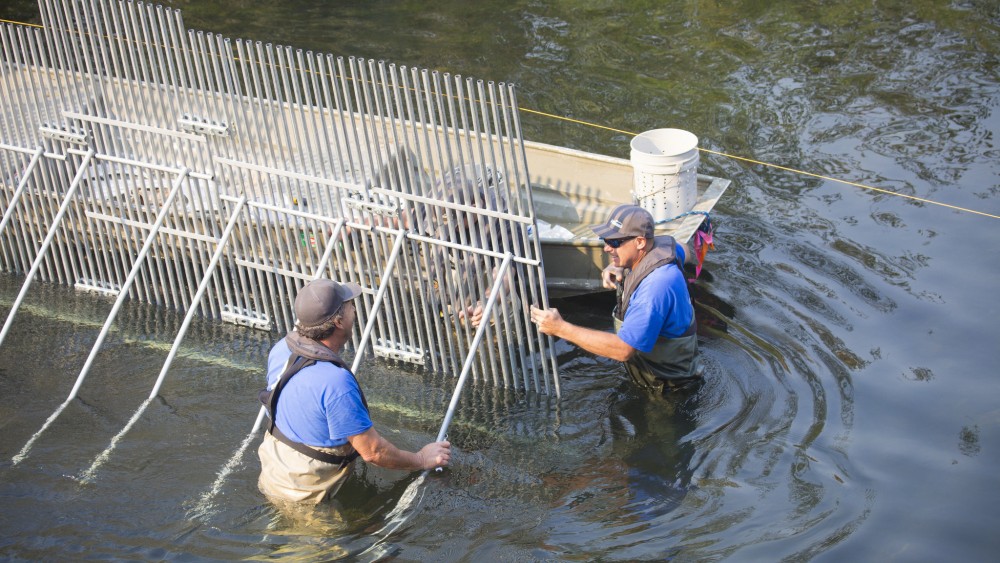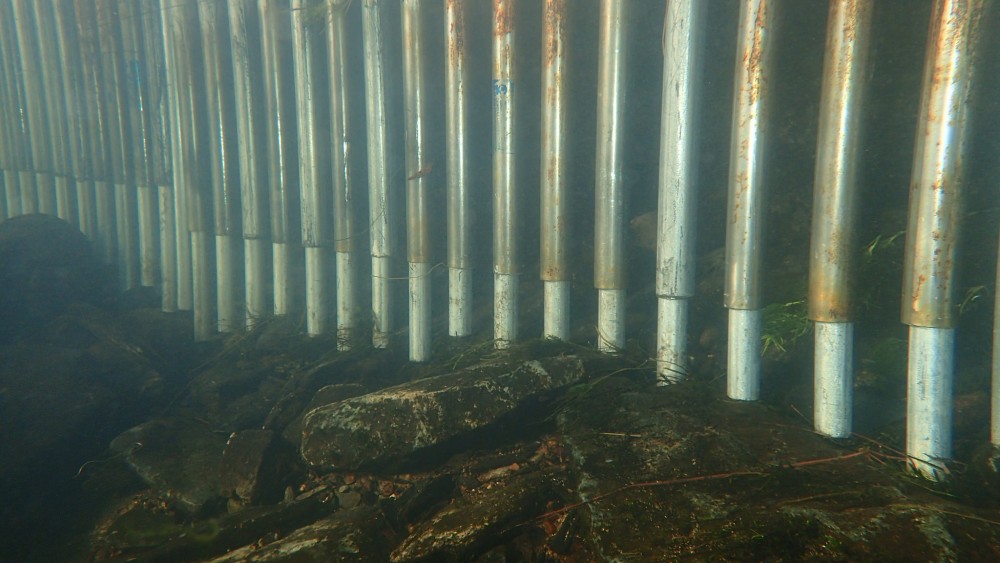Friday October 30, 2015
Using fish counting weirs to tally migrating salmonids is familiar territory for FISHBIO: we have been operating these devices on multiple rivers for over a decade, and have fabricated many more for other organizations throughout the West. Up until now, we have specialized in floating resistance board weirs. This type of weir has many advantages: it can operate under a wide range of river flows, can withstand heavy debris, is easy to clean, and allows for boat passage over it. One of the challenges with resistance board weirs is effectively monitoring fish passage in both directions using the same camera system. While we incorporate a downstream passage panel with adjustable fykes and a livebox (fish trap) in our resistance board weirs, those panels aren’t very suitable for camera installation.
In one of our current monitoring projects, we need to count both upstream and downstream fish passages near a hydropower facility. Because of the limitation of a resistance weir for this purpose, we decided to use a rigid weir design that will allow passage monitoring both upstream and downstream using the same camera system. The design consists of a passage chute located in the middle of the channel, with rigid weir panels extending both upstream and downstream to each bank. The rigid weir panels form a fyke that guides fish to the center passage chute. The passage chute consists of a custom-fabricated aluminum frame with a white acrylic floor and sides. In order to identify and count fish going through the passing chute, we equipped it with three HD video cameras and infrared lights. The cameras are connected to a computer located on shore that continuously records, and also makes short clips of fish passage thanks to motion detection software. The camera system is virtually the same as the Smolt Spy system we designed for the Summit Lake Paiute Tribe.
Our FABLAB built in some clever features to the rigid weir panels in order to improve their function for this particular application. Rigid weir panels need to have some infrastructure to hold them in place against the current. This is usually accomplished by using tripod structures or cabling to hold the rigid weir panels upright. To eliminate the additional infrastructure, the FISHBIO crew welded legs that hinge on the panels and are adjustable in length. We also made sturdy clamps to attach the weir panels together so they essentially function as a single rigid plane. The riverbed at the fish monitoring site is mostly very rough material, such as large cobbles. This uneven river bottom can create gaps along the bottom of the weir panels where fish can slip through. To address this issue, our technicians slid steel pipes down each picket, which allows the bottom of the weir panels to follow the contour of the substrate.
This weir has been in operation for several weeks now, and has allowed us to successfully record fish swimming freely both upstream and downstream. One challenge of rigid weirs is they are known for not withstanding debris trying to pass through, and often get blown out. We are hoping that the proximity to the powerhouse and dam will reduce the amount of debris that collects on the weir, but our team is ready to respond and keep the weir functioning if things get messy.




